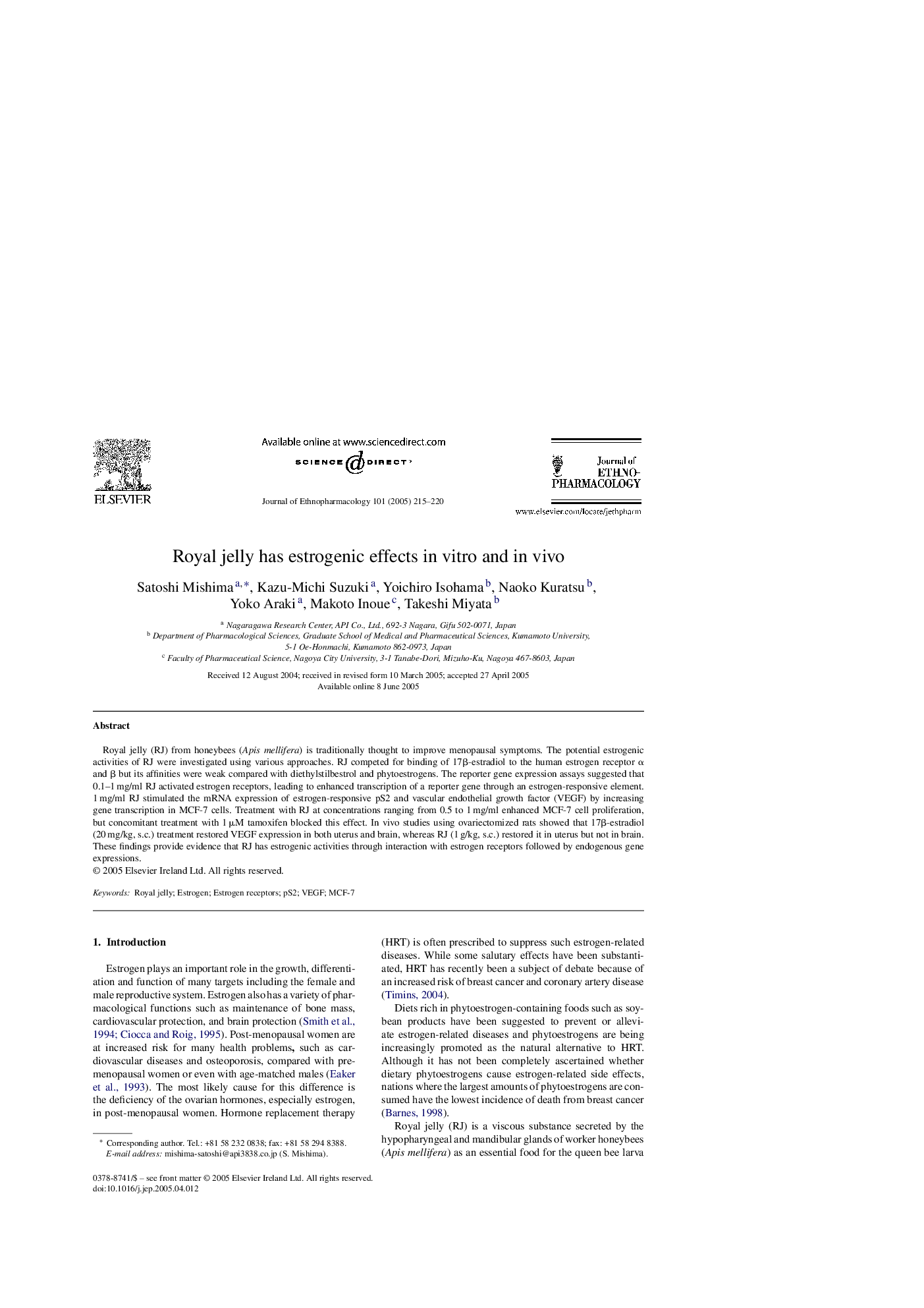| Article ID | Journal | Published Year | Pages | File Type |
|---|---|---|---|---|
| 9011217 | Journal of Ethnopharmacology | 2005 | 6 Pages |
Abstract
Royal jelly (RJ) from honeybees (Apis mellifera) is traditionally thought to improve menopausal symptoms. The potential estrogenic activities of RJ were investigated using various approaches. RJ competed for binding of 17β-estradiol to the human estrogen receptor α and β but its affinities were weak compared with diethylstilbestrol and phytoestrogens. The reporter gene expression assays suggested that 0.1-1 mg/ml RJ activated estrogen receptors, leading to enhanced transcription of a reporter gene through an estrogen-responsive element. 1 mg/ml RJ stimulated the mRNA expression of estrogen-responsive pS2 and vascular endothelial growth factor (VEGF) by increasing gene transcription in MCF-7 cells. Treatment with RJ at concentrations ranging from 0.5 to 1 mg/ml enhanced MCF-7 cell proliferation, but concomitant treatment with 1 μM tamoxifen blocked this effect. In vivo studies using ovariectomized rats showed that 17β-estradiol (20 mg/kg, s.c.) treatment restored VEGF expression in both uterus and brain, whereas RJ (1 g/kg, s.c.) restored it in uterus but not in brain. These findings provide evidence that RJ has estrogenic activities through interaction with estrogen receptors followed by endogenous gene expressions.
Related Topics
Health Sciences
Pharmacology, Toxicology and Pharmaceutical Science
Pharmacology
Authors
Satoshi Mishima, Kazu-Michi Suzuki, Yoichiro Isohama, Naoko Kuratsu, Yoko Araki, Makoto Inoue, Takeshi Miyata,
